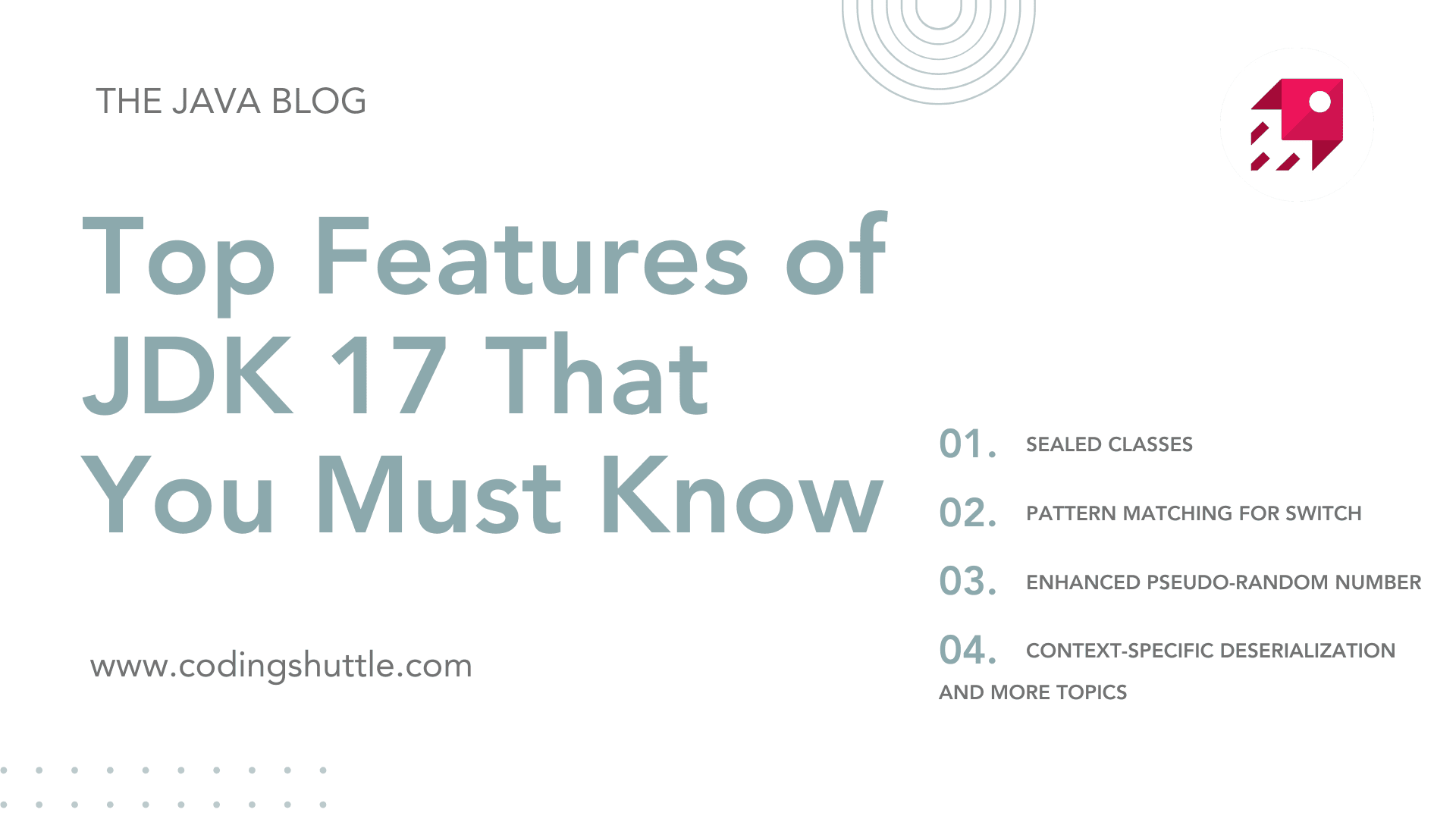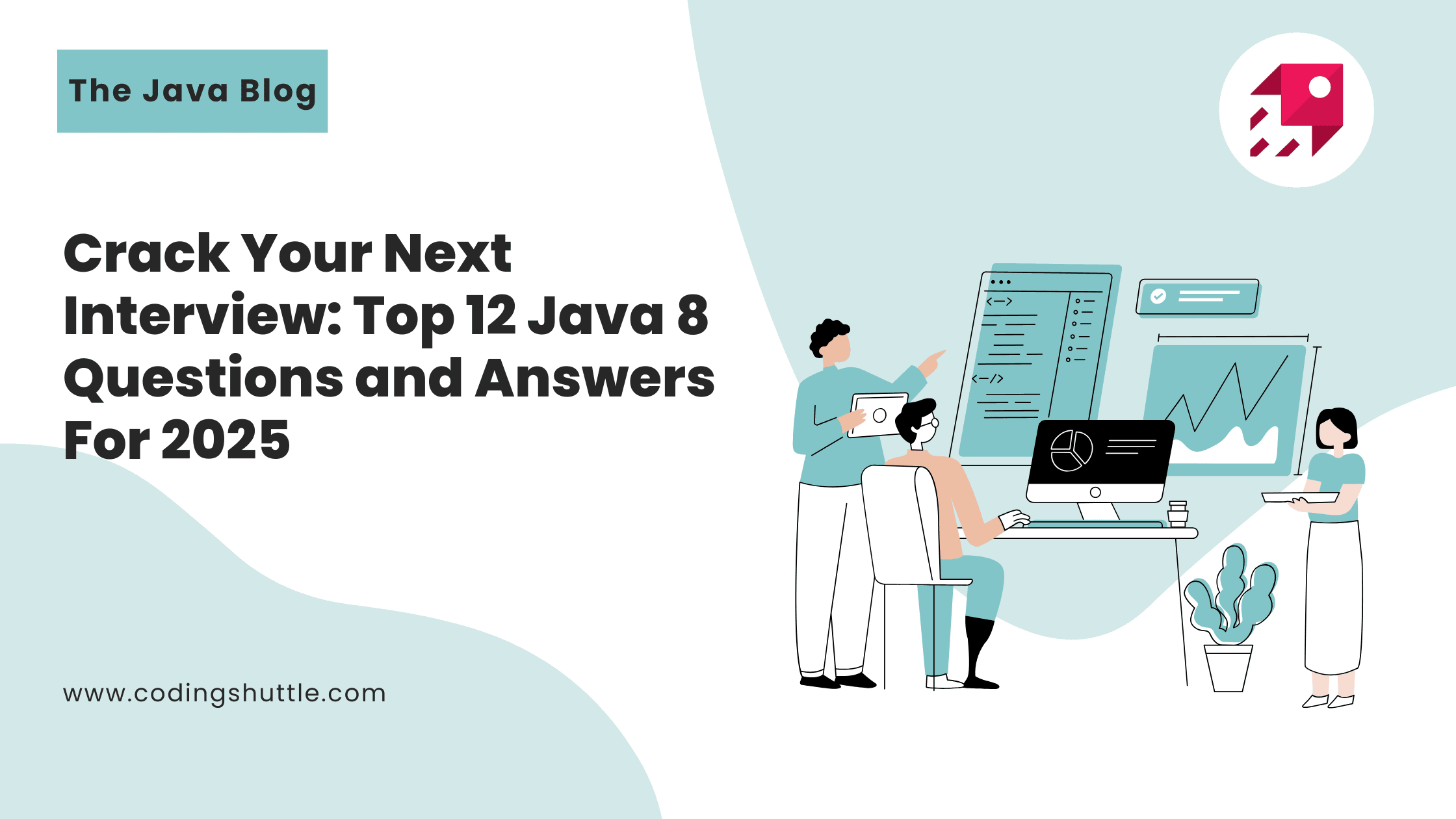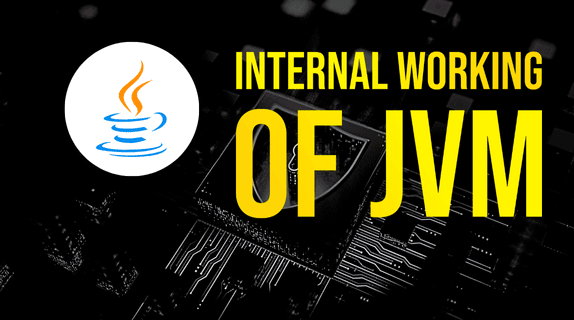
Top 8 Features of JDK 17 That You Must Know: LTS, Features & Performance In Java
This article explores JDK 17's key features, including sealed classes, pattern matching for switch, and macOS AArch64 support, along with major improvements, deprecations, and removals in this LTS release.
Shreya Adak
February 14, 2025
5 min read
Introduction#
Oracle introduced Java 17, the LTS Java version, in September 2021 to improve and upgrade the application’s stability, performance, and garbage collection, to enhance security, and API. You can visit their official website, Oracle Help CenterJDK 17 Documentation—https://docs.oracle.com/en/java/javase/17/. JDK 17 is free for production and redistribution under the https://www.oracle.com/downloads/licenses/no-fee-license.html.
LTS: Long-Time Support (LTS) in Java means a version that provides updated security, fixed bugs, and improved performance for the long term, ensuring enterprise applications stability. Java 8 (LTS), Java 11 (LTS), Java 17 (LTS), and Java 21 (LTS) are some Java (LTS) Versions.
Limitations of Java 8:#
- It lacks parallelism improvements. It has no multi-core processing support.
- It requires more boilerplate code. Because it has no sealed classes or records.
- It is less efficient than modern GCs.
- It is a complex type of handling. It does not allow any pattern matching for the switch case.
- Due to the weak security management (Weaker API encapsulation and outdated TLS) of this version, still it has security risks.
- It has no LTS official support since Oracle ended updates in 2019.
Limitation of Java 11:#
- It still does not allow any pattern matching for the switch case.
- It allows more boilerplate for data classes. Because it has no sealed classes or records.
- Advanced ZGC(Z Garbage Collector) optimizations are required.
- External dependencies are required.
- For the HTTP clients, few improvements are required.
Java 17 resolves these issues with Sealed Classes, Pattern Matching, Records, ZGC, and better API security.
Go to Oracle’s official website, and you can download the JDK and install it on different operating systems. https://docs.oracle.com/en/java/javase/17/install/overview-jdk-installation.html.
Java Development Kits (JDK) is used to develop, compile, and run Java applications. JDK is a combined version of JRE + Developments Tools and JRE is a Combined version of JVM + Libraries + Others tools. Java Runtime Environment is a core component of JVM for executing the java byte code.
Top Most New Enhancements And Features In JDK 17:#
To improve securities, developers’ productivity, and performances, many different topmost new features and enhancements are introduced by JDK 17, as outlined in various JEPs (JDK Enhancements Proposals). To make Java’s outgoing commitment more modernization and adaptability, some features have been removed and deprecated by JDK 17.
JEP: It is a structured proposal or process to modify, remove, or add some features inside JDK.
1. Sealed Classes(jeps-409): Restricting the implementation with Sealed classes and Interfaces#
We can achieve restricted/controlled inheritance by using sealed classes. Sealed classes must have at least one subclass. You can use one or more classes as permitted.
Imagine a government-issued ID card (like a passport or driver's license).
You can have only specific types of ID cards (e.g., Passport, Driver’s License, or National ID).
No one can randomly create a new type of government-issued ID without approval.
The government controls and restricts which ID types exist for security and standardization.
Similarly, in Java:
Sealed classes define a fixed set of allowed subclasses—just like the government defines valid ID types.
No unauthorized subclass can be created—just like you can't issue your own government ID.
Controlled hierarchy ensures consistency and safety—just like ID verification.
2. Pattern Matching for Switch(jeps-406):#
It simplifies code by allowing switch statements to handle different data types more efficiently, reducing boilerplate.
3. New macOS AArch64 Support(jeps-391):#
It provides native support for Apple's M1 chips, enhancing performance and efficiency on macOS devices.
4. New macOS Rendering Pipeline(jeps-382):#
It improves graphics rendering on macOS by leveraging Apple Metal API for better performance.
5. macOS/AArch64 Port(jeps-391):#
It ensures full compatibility and optimized performance on ARM-based Macs.
6. Enhanced Pseudo-Random Number Generators(jeps-356):#
It introduces new and flexible APIs for better randomness control in cryptographic and simulation applications.
7. Implement Context-Specific Deserialization Filters(jeps-415):#
It strengthens security by preventing deserialization attacks through customizable filters.
8. Foreign Function & Memory API(jeps-412):#
It allows Java applications to efficiently interact with native code and memory, replacing unsafe methods like sun.misc.Unsafe.
Removed Features and Options:#
1. Strongly Encapsulate JDK Internals(jeps-403):#
It enforces stricter module boundaries, reducing unintended dependencies and improving long-term maintainability.
2. Remove RMI Activation(jeps-407):#
It removes outdated Remote Method Invocation (RMI) activation, encouraging modern alternatives.
3. Remove the Experimental AOT and JIT Compiler(jeps-410):#
It discards experimental features that didn’t gain adoption, focusing on more stable optimizations.
Deprecated Features and Options:#
1. Deprecate the Applet API for Removal(jeps-398):#
Since modern browsers no longer support Java Applets, this feature is marked for removal.
2. Deprecate the Security Manager for Removal(jeps-411):#
The security manager is outdated and being replaced with modern security frameworks.
Known Issues:#
One of the known issues in JDK 17 is related to the JDK XSLT Transformer, which has certain limitations.
JDK XSLT Transformer Limitations:#
These limitations can affect performance and functionality, particularly when dealing with large XML transformations. Developers should be aware of these restrictions and consider alternative solutions or workarounds if they encounter issues during XML processing.
Conclusion:#
In this article, we explored the new features and enhancements in JDK 17, including Sealed Classes, Pattern Matching for Switch, and macOS AArch64 support, all aimed at improving security, performance, and developer productivity. With its LTS status, JDK 17 ensures long-term stability, making it a crucial update for Java developers looking to build modern, efficient applications.
Want to Master Spring Boot and Land Your Dream Job?
Struggling with coding interviews? Learn Data Structures & Algorithms (DSA) with our expert-led course. Build strong problem-solving skills, write optimized code, and crack top tech interviews with ease
Learn more

